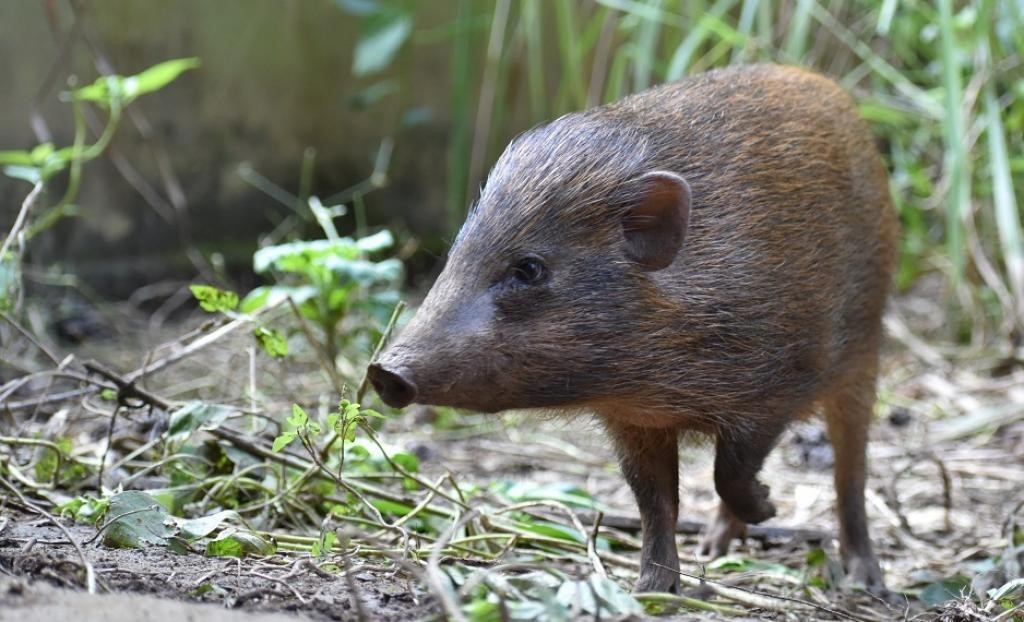Description

Disclaimer: Copyright infringement not intended.
Context
- African Swine Fever (ASF), the livestock illness that has decimated porcine populations across Asia since its advent in China in 2018, could deal a lethal blow to the pygmy hog, the world’s rarest and smallest pig.
- It is “extremely susceptible to extinction” from ASF due to its small populations and limited range.
A success story
- The pygmy hog is a conservation success story for India.
- Once thought to be extinct, it was rediscovered in 1971.
- The Durrell Wildlife Conservation Trust, United Kingdom, initiated the Pygmy Hog Conservation Programme in 1995.
- Pygmy hogs were brought into captivity in 1996 to start the recovery programme.
- Between 2008 and 2022, 152 individuals have been reintroduced into four protected areas (PAs) in Assam, including the recent release of 36 individuals in Manas National Park.
- Between 2011 and 2015 animals were reintroduced into the Orang National Park, successfully establishing a population there.
- One captive population is at the Pygmy Hog Research and Breeding Centre, at Basistha, in the foothills of the Garbhanga Reserve Forest, on the edge of Guwahati.
- The other is The Pygmy Hog Prerelease Centre, Potasali.

About Pygmy hog
- Scientific Name: Porcula salvinia
- The pygmy hog is the smallest and rarest wild suid in the world.
Distribution
- The species was historically known from only a few locations in northern West Bengal and north-western Assam in India, though it is now believed likely to have occurred in an extensive area of tall, alluvial grasslands south of the Himalayan foothills from north-western Uttar Pradesh and southern Nepal to Assam, possibly as far as southern Bhutan.
- After at least two decades without reported sightings the species was already feared extinct.
- However, in 1971 it was coincidentally ‘rediscovered’ in two separate locations in north-western Assam; namely Barnadi Reserve Forest in Darrang District and Manas National Park.
Description
- Pygmy Hogs measure about 65 cm in length.
- Females are a little smaller.
- Pygmy Hogs differ from members of the genus Sus in the extreme reduction in body, ears and tail size, relatively short medial false hooves, and snout disc perpendicular to axis of head.
Habitat
- Pygmy Hogs prefer undisturbed patches of grassland dominated by early successional riverine communities, typically comprising dense tall grass intermixed with a wide variety of herbs, shrubs and young trees.
- The species is not found in areas subject to prolonged inundations during the monsoon.
Diet
- Pygmy Hogs feed on roots, tubers, shoots and ground vegetation, along with worms and other invertebrates and, probably, small vertebrates (e.g. reptiles and the eggs and nestlings of ground nesting birds).

Social organisation
- Adult male Pygmy Hogs are usually seen by themselves, but are reported to join estrous sows during the rut and to associate loosely at other times of the year with the basic natal social family units.
- These units usually consist of four to six individuals, including one or more adult females and accompanying juveniles.
Status and conservation
- The IUCN has listed Pygmy Hogs as Critically Endangered.
- It is also listed in the Schedule I of the Indian Wildlife (Protection) Act, 1972.
- The main threats to survival of Pygmy Hog are loss and degradation of habitat due to human settlements, agricultural encroachments, flood control schemes, and traditional forestry management practices.
- Some management practices, such as planting of trees in the grasslands and indiscriminate use of fire to create openings and to promote fresh growth of grass, have caused extensive damage to the habitats the authorities intend to protect.
What is African swine fever?
- African swine fever (ASF) is a highly contagious viral disease of domestic and wild pigs, whose mortality rate can reach 100%.
- It is not a danger to human health, but it has devastating effects on pig populations and the farming economy.
- There is currently no effective vaccine against ASF.
- The virus is highly resistant in the environment, meaning that it can survive on clothes, boots, wheels, and other materials.
- It can also survive in various pork products, such as ham, sausages or bacon. Therefore, human behaviours can play an important role in spreading this pig disease across borders if adequate measures are not taken.
- 74 countries have reported ASF cases since 2005 and as of July 2022. In January 2022, ASF genotype II was notified on the Italian mainland after around 40 years of absence. Two new countries reported the first occurrence of the disease in January as well: North Macedonia and Thailand. In March 2022, ASF was reported for the first time in Nepal.
Prevention is essential
- In the absence of an effective vaccine, prevention in ASF-free countries depends on implementation of appropriate import policies and biosecurity measures, ensuring that neither infected live pigs nor pork products are introduced into ASF-free areas.
- This includes ensuring proper treatment and disposal of waste food from aircraft, ships or vehicles coming from affected countries and policing illegal imports of live pigs and pork products from affected countries.
|
PRACTICE QUESTION
Q) Which of the following statements with reference to Pygmy Hog is/are correct?
a. The pygmy hog is the smallest and rarest wild suid in the world.
b. Planting of trees in the grasslands have caused extensive damage to their habitats.
- a only
- b only
- both a and b
- neither a nor b
Correct Answer: 3
|

https://www.downtoearth.org.in/news/wildlife-biodiversity/african-swine-fever-threatens-india-s-pygmy-hog-other-asian-wild-pig-species-science-article-89008











